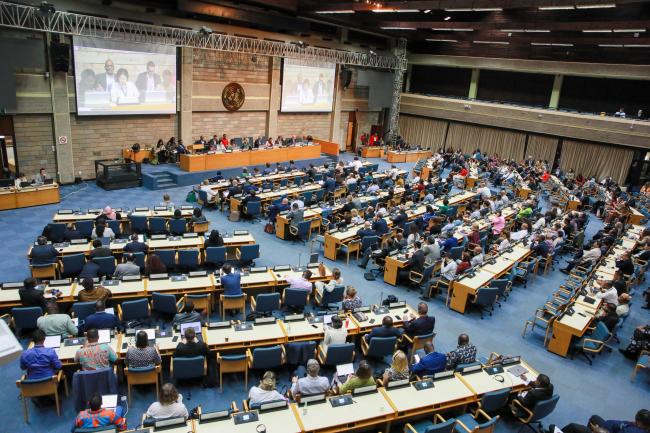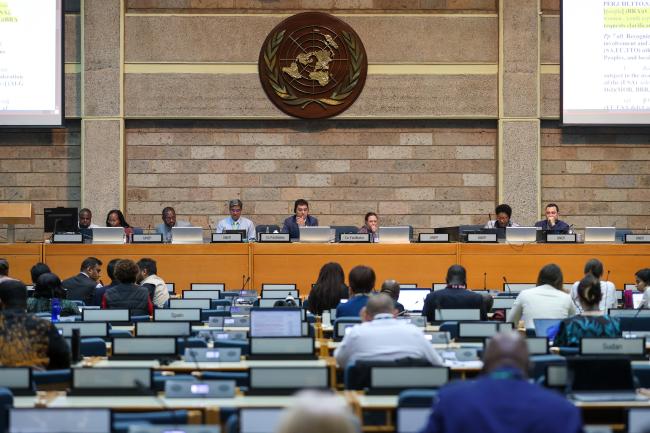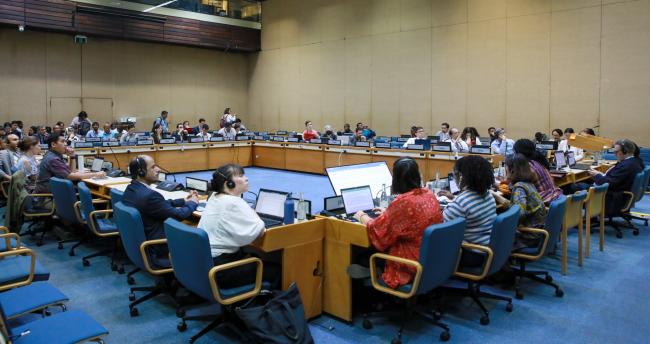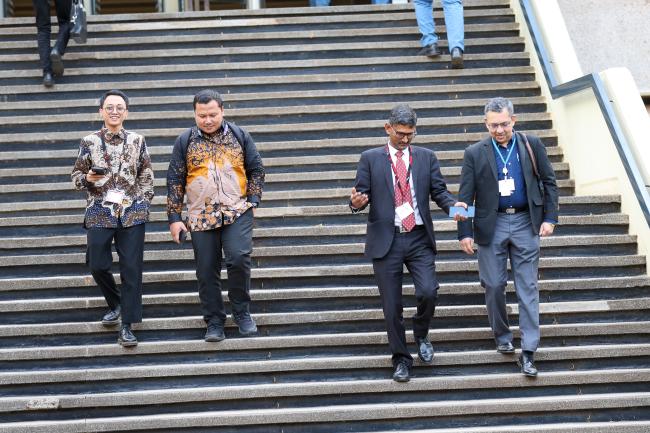On the final day of the meeting, one could feel a palpable duality in the air as negotiations carried on throughout the day. On the one hand, the incomparably curated greenery of the United Nations Office in Nairobi campus gave a sense of time standing still as one can easily get lost in one’s thoughts surrounded by and in harmony with nature. On the other hand, a few steps away, inside packed meeting rooms, delegates huddled, put their heads down, and raised their hands all conveying their anxiety about time slipping away.
Want to dig deeper into today's talks? Read the full Earth Negotiations Bulletin daily report.
From morning until late into the evening, at an almost nonstop but familiar pace of United Nations negotiations, back-to-back working groups and informal informals were taking place as delegates perhaps idealistically made a final valiant effort to lift brackets and clean draft resolutions. If delegates were to try to give a diagnostic of what were the bottlenecks preventing the sixth meeting of the Open-ended Committee of Permanent Representatives (OECPR-6) from reaching agreement on all the draft resolutions before them, in their own views, a simple conclusion would not be so forthcoming. Instead, the progress made or stalled text is more reflective of the issues under negotiation.
The solar radiation modification (SRM) draft resolution remained one the furthest from finalization, but considering that the United Nations Framework Convention on Climate Change, the Intergovernmental Panel on Climate Change and the scientific community at large remain flummoxed about this potentially high-risk, high reward scientific application, the OECPR cannot be faulted for struggling to come to consensus on this resolution.
Conversely, an aggregate review of draft resolutions that are edging closer to winning the race to the end were arguably related to issues and processes that have recently been negotiated independent from the United Nations Environment Assembly (UNEA). The draft resolutions on sand and dust storms, land degradation, and amendments to the instrument for the establishment of a restructured Global Environment Facility (GEF), all made significant progress; for some of these resolutions, the Co-Facilitators noted in plenary, the text could have been finalized if more time had been available indicating that the issues in themselves were not the problem like SRM, but the commitment to achieve sound and robust text.
In the evening, Chair of the Committee of Permanent Representatives (CPR) Firas Khouri opened plenary noting that agreement had not been reached on a single draft decision or resolution, and proposed transmitting the latest drafts posted on the portal to UNEA-6 for further consideration. The Co-Facilitators reported back on their respective clusters and, in some cases, stated that Member States will continue meeting over the weekend to informally advance work ahead of UNEA-6, which begins on Monday, 26 February.
UN Environment Programme Executive Director Inger Andersen provided encouraging closing remarks, noting that heavily bracketed texts in the draft resolutions is not unusual at this stage and urged delegates to use their presence in the environmental capital of the world, as a chance to show that multilateralism and environmentalism meet here in Nairobi and to deliver future long-term sustainability to present and future generations.
In a post-pandemic world laden with the triple planetary crisis and armed conflict, delegates demonstrated that they will not be deterred and will make perfect the enemy of the good on their path to deliver results for UNEA-6.
CPR Chair Khouri gaveled OECPR-6 to a close at 9:40 p.m.
To receive free coverage of global environmental events delivered to your inbox, subscribe to the ENB Update newsletter.
All ENB photos are free to use with attribution. For UNEA-6 and OECPR-6 please use: Photo by IISD/ENB - Mike Muzurakis
















































